Graham Reid | | 15 min read
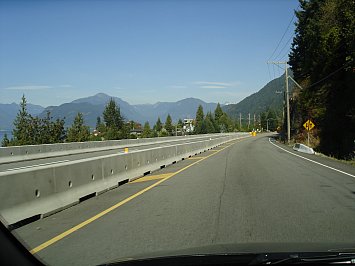
So, five years on from 9/11 and what have we learned? Mostly that with heightened security arrangements we have yet to figure out a way of getting masses of people through airports without causing frustration, delays and rancour.
As one who likes to fly -- yes, the seats are still uncomfortable but someone feeds you, brings you drinks, there are movie choices and no cellphones, so what's not to like? -- I applaud any security measure or caution about safety that will ensure a safe flight.
If any flight is held up because a light in the cockpit is acting funny I say they should reeeeeally take their time to sort it out.
I for one would prefer to wait for them to be fully satisfied than for me to get to the Final Destination Of Life a bit before I am ready.
But what irks -- and the other day it was REALLY irking passengers in Auckland and San Francisco -- is when you spend a long and uncomfortable time in queues waiting to be ticketed or pass through security.
In Auckland there were only four people working the ticketing desks when at least the same number of flights were departing in the next hour or two. There were dozens of increasingly angry people standing around for what seemed like an age. (Fifty minutes in my case to get up the serpentine line to the desk.)
People around me were getting very tetchy and wondering aloud why the airline couldn't have put on maybe one or two more counter staff to get the line moving. I'm sure there 's a good explanation -- which to any of us in that queue would simply sound like an excuse.
For many people flying is harrowing enough: they are often farewelling loved ones; are fearful; don't much care for the chicken-or-beef option . . .
Moving people efficiently through an airport should not be beyond the bounds of human capability.
Gotta say it was MUCH worse in San Francisco however: I stood in a crowd -- not even a queue -- as at least a dozen United flights were set depart within 90 minutes. And there were only three security lines working.
The American Solution is an interesting one however: rather than employ more security people and open up more security lines they do what you see happen so often in the States.
They employ more people in uniforms -- often very large middle-aged women -- who stand around and yell at you to have your tickets ready and some form of photo ID available.
(I leave it over to you to see the metaphor for American foreign policy here.)
One poor guy attempted to ask one of these women for help and got brutal treatment.
"Sir, you know what I need? What I need is for you to take a step back and allow me to keep these other people moving. We have lines here we need to take care of."
Ironically there were no lines. What they had was three deceptively short artificial barriers so you were guided towards one of these (a queue almost formed) but then as people shuffled forward the barriers disappeared and people became an annoyed crowd again.
Lines formed as we neared the place where we all had to take our shoes and jackets off. You can imagine how that slowed things down, watching obese old ladies trying to take off their trainers isn't not a pretty sight.
Tempers were fraying as people thought they might miss their flights.
Inefficiencies were everywhere: Hell, these people hadn't even thought they might need more than one rubbish bin to take all the water bottles and containers that people were being told to discard.
So amidst the confusion of the "queue" you also had to step over bottles and plastic containers.
None of this puts people off air travel because for most it is just something they have to do.
But you'd think a little more commitment to customer comfort amidst the safety precautions might not go amiss. They are not mutually exclusive.
I'm going through all this again in about 10 days and since 9/11 -- I flew to the States just a month later -- I have learned to be even more patient than I usually am. These days you have no choice -- you might get barked at by a lady in a uniform who loves to wield very little bit of power she has.
So it has been five years since 9/11 and what have we learned?
Lots of things of course -- but it has also been almost four decades since a man first walked on the moon.
I doubt Neil Armstrong would want to bother with going through an airport these days.
Part Deux
It was the size of the beast which took me aback: huge and black and
menacing, like something thought up in a Hollywood studio SpFx
department. Scary.
At home I drive a modest car, one that could fit in the boot of one of those SUV supertanks that I literally look up to. But here I was at the Hertz lot in Vancouver's airport and my allocated vehicle looked like something from Darth Vader's garage.
I climbed up and inside it, and was small and unworthy.
The wing mirrors were the size of dinner plates, the driver's seat like one of those Lay-Z-Boy rockers and -- although I drive an automatic back home -- this had some kind of weird column change of the kind I had never had to use before.
I felt weak and inferior. I had failed the Buick Whatever and so I went back to the office to ask for a smaller vehicle.
"I'm sorry sir, that's the smallest we got right now."
And so I dragged my suitcase and fearful self back across the carpark and, using the remote key, tried to open the rear passenger door to throw my suitcase up onto the back seat.
"Two clicks," yelled a helpful guy from somewhere behind me.
Without him I might still be standing there, suitcase in hand looking like a dwarf beside this monster of metal.
I started it up and said aloud to give myself confidence, "Ten-four good buddy" and drove my truck cautiously out of the parking building.
And so at night, in an unfamiliar city on the different side of the road and in a vehicle that only a governor of California could feel entirely confident in, I drove into Vancouver looking for my hotel.
I'm going to brag: I pulled it off brilliantly.
(Okay, I missed the hotel twice but that's because the entrance is on a side street and the sign out front is covered by a tree).
So here I am, gassed up and ready to go. Sort of.
Today I left the steroid-infected Supertruck with the valet while I walked around the city, but tomorrow morning at rush hour I take possession again and am starting to drive around BC for a little over a week.
I'm excited by what I'm going to see. (Already the mountains across the
bay are very tempting).
But mostly I'm terrified by this Beast Of A Buick.
Not by what damage I could do to others or myself, but that most worrying of questions these days: What does it cost to fill one of these behemoths?
Part The Third
The Buick Beast and I have come to an understanding: I will take every precaution and it will be gentle with me. And the arrangement is working well.
In truth, once outside downtown Vancouver driving has been extremely easy: the roads are good; the weather perfect; the traffic minimal, and Highway 101 which I drive to go to tiny Egmont is scenic for the most part.
Canada -- that cliched "Real Canada" of pine forests, beautiful lakes, wooden homes discreetly placed in the trees -- opens up about halfway across Lions Gate Bridge out of Vancouver.
In the windscreen ahead is a postcard of Canada, the one we also know from brochures. But it is no less true, beautiful or striking for its familiarity.
And so as I drive 101 I make repeated stops and smile-inducing digressions off the main route whenever the opportunity offers itself.
And there is so much to see, notably quaint little Gibsons where I stop for a coffee smoothie then walk along the pier. I photograph just about everything in town, especially Molly's Reach, a restaurant-cum-store made famous in the long-running 70s telly series The Beachcombers which was sold to about 50 countries, New Zealand among them.
Later I head off the highway down into tiny bays and harbours, stretching a two hour drive to around five.
My photographic record is in danger of repeating itself: a beautiful lake; a beautiful lake with an interesting log or canoe in the foreground; a beautiful lake with towering mountains behind; a beautiful lake with all of the above.
And so my journey through this vast, beautiful and largely under-populated part of this photogenic country rolls on.
My travelling companion is 91.7 CK-FM which gives ferry reports and local news (about how to keep bears away from the backyard!) between interesting and long-forgotten classic hits.
But I part company when they play Supertramp, a band I find unforgivably wretched.
So I turn the radio off.
There is so much beauty beyond the bonnet of the Buick Beast that it is
best considered in contemplative silence.
Go, Part Fourth.
This happens to me -- as I'm sure it does to you -- every time I travel: what was once the familiar and mundane becomes the interesting and engaging because of the changed context.
For example, I have been driving the Sunshine Coast and Vancouver Island in Canada with the radio tuned to CK-FM, an ad-free, public service station which plays classic hits and offers updates on traffic, ferry sailings and what the local theatre groups are up to.
Fascinating, but it's also the classic hits which have kept me amused: this isn't the Eagles/Fleetwood Mac vortex we are forced to endure back home, but one-off popular songs I know off-by-heart but can never remember who sang (and they seldom back-announce).
So I get to sing along to that one which has the memorable chorus "that's what I like about you", classic disco-soul from Tavares, and so on. It makes the miles of over-achieving Mother Nature go by effortlessly.
Oddly enough this also adds lustre to the familiar. I even listened right through to Bryan Adams' Summer of '69 which I would probably never do at home. I guess it is the clear mountain air, blue skies and powerful Buick beneath me which make for a more conducive listening environment.
(Although the Candian music quota means I have heard more Guess Who, Bachman Turner Overdrive and old Neil Young in four days than I have in the previous 40 years of my life. Who knew Guess Who were so big?)
The other thing I love about this kind of travel is that I pick up local papers and discover things that aren't mentioned at home.
Hell, I even know the name of the Canadian PM now (Stephen Harper in case you too were in the dark). And then there are the snippets. Here's a partial list gleaned from various papers.
+ The mayors of Whistler and Squamish joined Vancouver's 2010 Olympics organisers to support the plan to house Games media in a cruise ship docked in Squamish, despite the IOC giving the idea the thumbs down. (Can you imagine that? Whadda party boat!!)
+ Taxpayers in British Columbia will foot the bill for the Olympics to the tune of about $1.5 billion according to an Auditor General's report, which discredits the provincial government's claim it would only cost $600 million. Plus ca change as (some) people say around here.
+ The play Broue set in a working class bar in Quebec has become the world's longest-running play with the same cast. The three guys have been doing it since March 1979 and have performed it 2,726 times. (More by the time you read this, I guess.)
+ The US has been using the Great Lakes for live ammo training for Coast Guard personnel, thus giving the lie to the old phrase "the longest undefended border in the world". Since the start of the year they have conducted 24 drills firing 3000 rounds of live ammo at least eight km from Canada's border.
+ There are more blond, healthy looking people per square metre in Whistler than anywhere else in the world outside Sweden. (Actually I made that up, it just feels like that.)
So right now I am in lovely Whistler between mountain-bike and ski seasons so the place is nice and quiet, although a number of restaurants are closed.
But last night I ate (the only person in the place) at the superb Apres, a French restaurant where I had the foie gras. There is a raging controversy here about foie gras (from Quebec). There was recently television film of a duck being force-fed grain and people were outraged. (Where did they think it came from?)
So I had foie gras -- but no spinach. Spinach is off after someone died from E.coli in the States.
Afterwards I went back to my room and scanned the fortysomething channels trying to find news. I gave up, although I was tempted to try Juicy Juggs or Exxxstacy Island 2 (and I haven't even seen Exxxstacy Island 1).
So there's not a lot to do sports-wise in Whistler right now, as if I was ever going to. I'll drive to the top of a few mountains, go to more beautiful lakes and may head to Pemberton where some Native American people live -- who are conspicuous by their absence -- and see what they think about the million dollar property boom in and around Whistler and the Sunshine Coast.
I guess as the original occupants of this beautiful and once bountiful land they must be really coining it in on rent, right?
Righto, sun beckons -- and so does CK-FM.
Part Five
The new camera cost me — all up with provincial and other taxes plus the usual extras you need like a carrybag — about $CAN550. Which is somewhere around $NZ680 I am guessing.
The reason I bought the new camera is not just because photogenic Canada demanded something better than the excellent digital I already had, but that the last photo on the old one was a blurry image of one of my shoes and some rocks taken just seconds before the camera was plunged, along with me, unexpectedly into the creek near Rainbow Park in Whistler.
It’s a very funny photo and I’ve posted it in Images From Elsewhere with the caption: “this is the Canada no one warns you about”.
Canada is all about the Great Outdoors so while you are keeping a wary eye out for bears or looking for that perfect angle of sun glinting off a mountain stream you will almost inevitably lose your footing. And I did.
I drove back to Whistler wet and feeling stupid, managed to get from the underground carpark at the Summit Hotel to my excellent room without being spotted, and hung my clothes on the patio in the sun to dry out.
I also tried to dry out the camera — with some success as it has turned out — but the short of it was I needed another. And Canada deserves a good if not great camera — especially one permanently set on “landscape/wide-angle”.
This is a Big Country and it gets bigger as I go.
After Whistler — which mid-week in an off-season was very quiet — I pretty much had the highway to myself from Pemberton north towards Lillooet and then Kamloops. There were times when it was just the enormous landscape of mountains and high desert plateaux, and the camera(s) working overtime.
Beautiful, all of it. Even the mountains scarred by now-absent snow and standing guard over the autumnal colours — vivid yellows, deep amber, bright reds and various shades of brown and green — in the river valleys below.
Last night, after more Major League Canada and Minor Community Service Announcements on the local radio stations I pick as I drive I arrived at Lac Le Jeune where I stayed in a lodge by the lake. Another postcard view, another dozen photos taken at dusk and then on sunset.
I was left alone. There was a wedding at the lodge so the dining room was full. They asked if they could bring me my dinner in my room with a view.
Gee, you mean I get to stay in my room, have dinner and wine brought to me, and listen to the silence?
There was no phone, to television or radio, no internet. No nothing. Just the warm evening, a placid lake, a guy in a canoe fishing and me sitting watching. And taking photos with my new camera, of course.
Part Six
According to a statistic I heard last night -- admittedly in park not through a monitored study -- 68 per cent of inbound visitors to Canada express a desire to have contact with Native Americans.
Hardly surprising really given that -- as with Maori in New Zealand -- if you don't see Canadian Native Americans in Canada then you are unlikely to encounter them or their culture anywhere else.
So like that majority, I too was keen to meet and talk with Native Americans -- aka First Nation, Aborigine or Indian depending on who is talking.
But it isn't as easy as you might think. First Nation people are largely invisible, and not just in the bigger cities. I also assumed I'd be talking photos of totem poles all over the place but that hasn't been the case either.
So last night's encounter with Robert and Lee from Calgary, in Kelowna for an arts conference, was a particularly happy one.
You didn't need to be too bright to spot they were First Nation people: Robert's dark complexion, and long hair hanging in braids bound with twine was pretty much a giveaway.
So we chatted about this and that, why they were an invisible people and so on. You probably know the answers as well as I did.
It was a wonderful chance encounter and a nice commonality of humanity was established. (I had a less friendly, more business-like one today in a shop selling Native American crafts, but it didn't stop me buying some gifts).
And the night got better with a beautiful wine tasting and meal at Fresco restaurant here in town about which I intend to write in more detail when I have a chance. If you are coming here don't miss it -- or The Grateful Fed (the psyche-deli café) for brunch, a real 60s/70s hangout.
But now it is a day of wine tasting in the Okanagan vineyards.
And to think I do this for a "job".
Part The Final
You realise for yourself how big a country Canada is when, after having driven for three hours, you read the road sign and say to yourself, “Oh cool, Vancouver’s only 212 kilometres away”.
Yes, this is a very big country and in the past 10 days I have only driven around one tiny corner of it. Distances here are more often measured in hours — and sometimes days — than in kilometres. That said, yesterday I drove for about five and a half hours from Kelowna back to Vancouver, deliberately going the long way.
There was a shorter route but I am here to see as much as I can and I sure didn’t mind the drive. Canada opened itself up again.
Sure you can say that for much of it in the central part of British Columbia it is one pine-covered mountain after another (usually with a lake somewhere close by), but there are also large tracts that are high mountain plain, rolling fields and farmland, and sometimes you need to do a scale-check.
You are looking up at mountains towering hundreds of metres above you -- at this time of year dripping rocks and gravel by the ton -- and realise that you are also at quite a few hundred metres already.
Today I drove a steady road winding downwards at about 30 degrees for almost 40 minutes. You just need to think about that for a minute. And even when I reached the bottom I was still at some pretty high altitude.
The trip back to Vancouver was scenic: especially the Okanagan Valley where you are obliged to stop to taste and buy wine, or pick up roadside fruit at the appropriately named Summerland.
It was also dead easy. For most of the time I was one of very few cars or trucks on the road, and even when another was in close proximity we were scooting through the landscape on beautifully cambered roads at 100kph so it was effortless. Like low level flying through the mountains and valleys, the small towns and roads alongside sparkling rivers.
It has been a fascinating 10 days and has set me up for The Big Drive next year from one coast to the other (via the States during boring bits of Manitoba I am advised).
My regret is I didn’t see a bear hooking a fat salmon out of a mountain stream. But unfortunately I did see a magnificent black bear two days ago.
It was lying by the side of the busy highway just outside Kelowna.
It was a sudden and sad sight and I still feel shocked and moved by it.
But in it I also saw a metaphor for this enormous country where landscape can determine your emotions: that wild and untamed Nature is never far away . . .
(A compendium of on-the-road blogs for www.publicaddress.net and www.houseoftravel.co.nz in Sept-October ‘06)

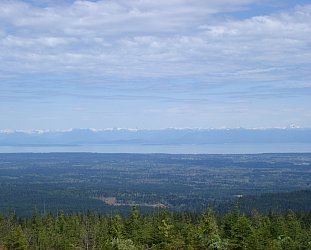

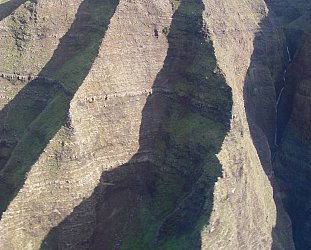
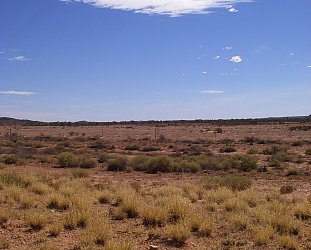
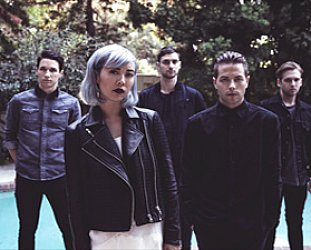
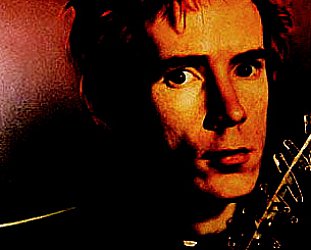
post a comment